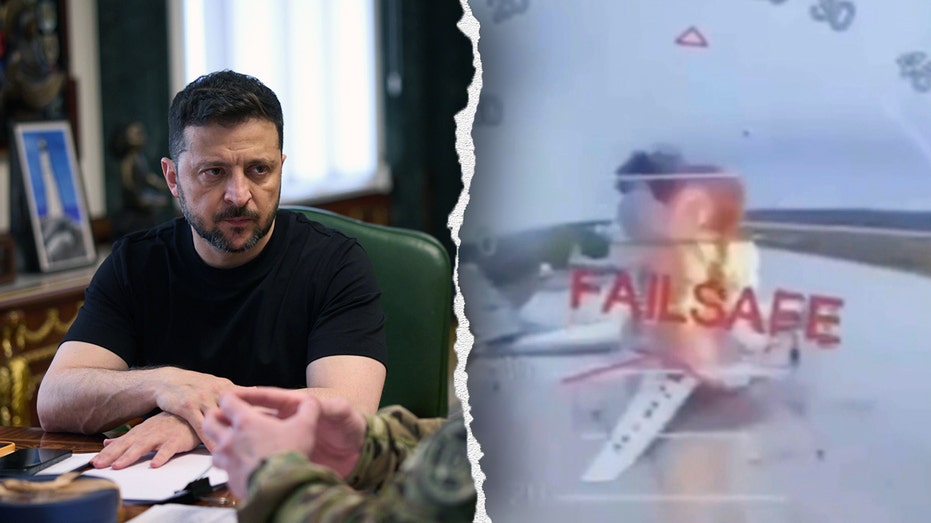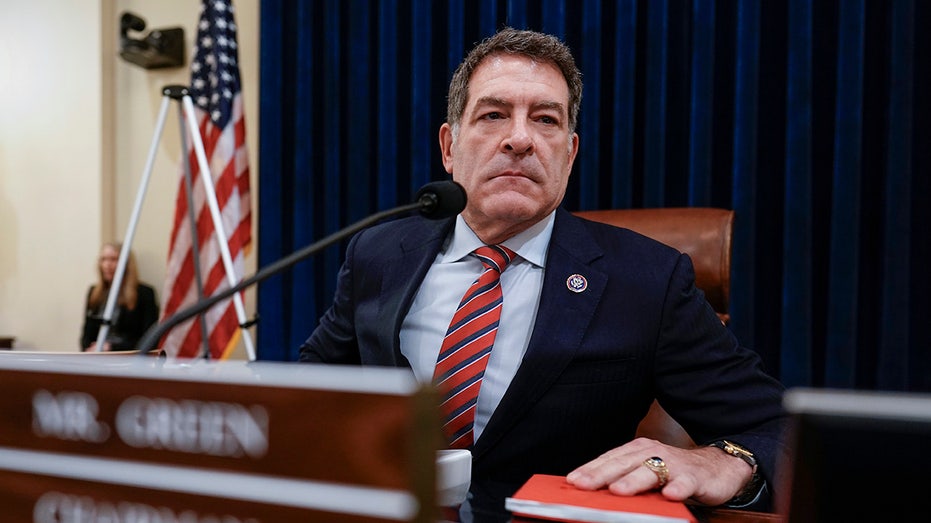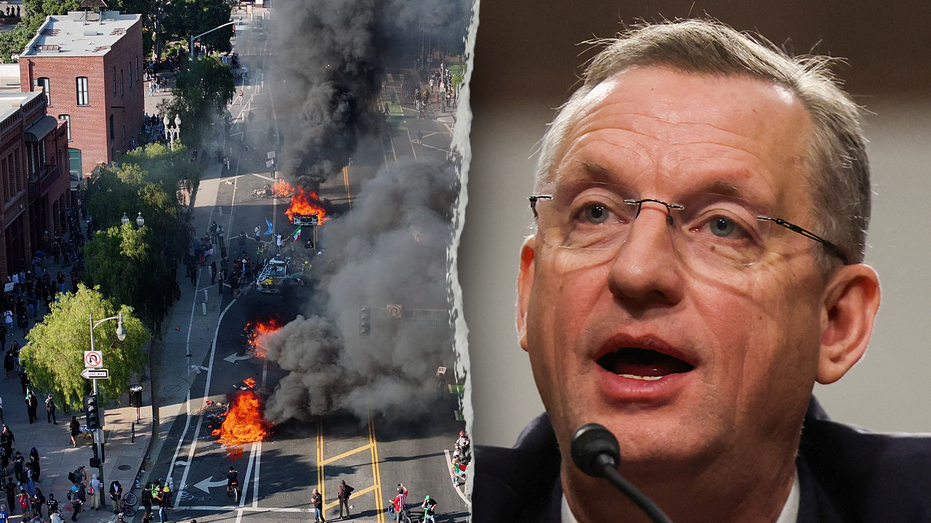Ukraine’s 'Spider’s Web' Drone Strike Destroys Over 40 Russian Warplanes, Moscow Labels It a ‘Terrorist Attack’
Ukraine conducts historic drone attack deep into Russia, destroying over 40 bombers in its longest-range operation yet.

Ukrainian forces delivered a stunning blow to Russia’s air power on Sunday, launching an unprecedented drone attack that destroyed or damaged dozens of aircraft at five major military airfields deep inside Russian territory. The operation, known as "Spider’s Web", marked one of the most ambitious and coordinated strikes of the conflict to date. Ukrainian officials confirmed that preparation for the assault took a year and a half and was overseen directly by President Volodymyr Zelensky.
According to Ukraine's security service, small FPV (first-person view) drones were cleverly concealed within wooden cabins mounted on trucks. As these trucks reached their targets undetected, the roofs opened remotely, allowing the drones to launch directly onto the airfields. Striking video footage circulating online captured the moment drones soared up from parked trucks, moments before slamming into large aircraft stationed on the runways—showing evidence of flaming wreckage and plumes of smoke rising from the bases.
Zelensky hailed the operation as “an absolutely brilliant result”, emphasizing that it was “achieved solely by Ukraine.” He revealed in a statement that the mission took “one year, six months, and nine days from the start of planning to effective execution,” calling it “our most long-range operation.” The president added that all Ukrainian personnel involved had been safely withdrawn from Russian territory before the strike, and he praised General Vasyl Maliuk, head of the SBU, for masterminding the daring assault. Zelensky concluded, “These are Ukrainian actions that will undoubtedly be in history books… Ukraine is defending itself, and rightly so.”
The Russian defense ministry acknowledged that airfields in Murmansk, Irkutsk, Ivanovo, Ryazan, and Amur had all come under attack. Moscow condemned the raids as a “terrorist act” but admitted that several aircraft caught fire during the incident. Some suspects have reportedly been detained, though details remain scarce.
Ukraine stated that 117 drones were used to carry out the barrage, with the SBU claiming they hit 34% of Russia’s strategic bombers—a blow that could cripple Russia’s long-range missile capabilities. The estimated damage ranged from $2 billion to a staggering $7 billion, with independent verification of aircraft lost still ongoing.
The attack came on the eve of planned peace talks between Ukraine and Russia, set to take place in Istanbul. These talks, which are expected to address demands such as a full ceasefire, prisoner exchanges, and the return of children taken to Russia, have not yet produced any public agreements from the Kremlin. The timing of Ukraine’s airstrike has injected new tension into the already fragile negotiations.
The U.S. government confirmed that it was not notified about the operation in advance. Secretary of Defense Pete Hegseth received detailed briefings only after the raid concluded. Pentagon officials described the operation as highly sophisticated and noted uncertainty about whether the drones were piloted or autonomous once deployed from inside Russia. While Ukraine claims dozens of bombers were hit, American intelligence currently estimates that between 11 and 15 Russian aircraft may have been destroyed or severely damaged, across as many as five military airfields.
Military analysts say the raid constitutes a major setback for Russia’s ability to carry out large-scale missile attacks. Notably, some of the targeted bombers included TU-95 and TU-22M3 aircraft, which have previously played a key role in striking Ukrainian infrastructure. Ukraine also claimed to have damaged a Russian A-50 radar plane, an essential asset for coordinating air operations.
Weapons experts noted that because the drones were launched from inside Russian borders, advanced air defense systems like the S-300 and S-400 had insufficient time to respond—a tactical surprise that maximized the destructive impact of the raid.
As the dust settles, the ramifications of this high-impact attack are only beginning to emerge. The strike deep inside Russian territory signals both a newfound reach for Ukrainian forces and a potential turning point in the ongoing conflict—one that may alter the course of coming negotiations and reshape future military strategies on both sides.




